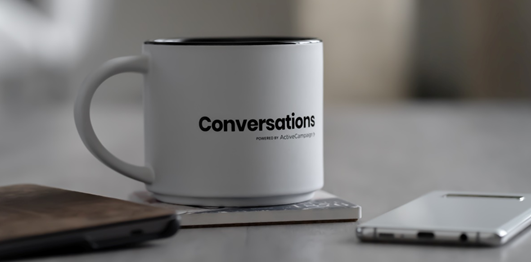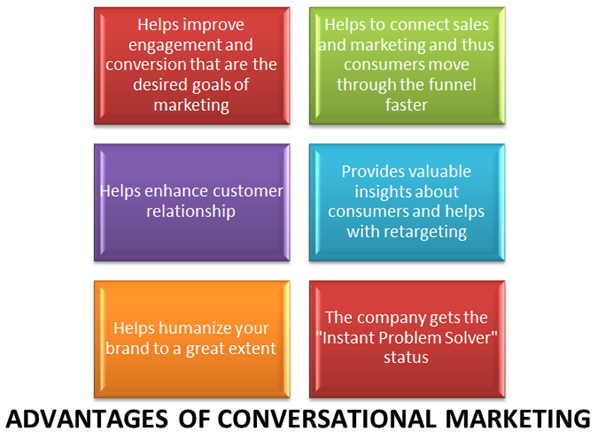Conversational Marketing : Changing the way customers buy
How many times did you respond to a cold call or open an email from your spam folder?
The number might be really low.
Well, statistics say the same.
Customer behavior is changing.
The average landing page conversion rate has fallen to 2.35%.
Only 43% of people answer cold calls.
The average email open rate has fallen to 17.80%.
59% of buyers think the sales email they receive is irrelevant.
All this is because the idea of swift, easy, personalized, and real-time conversations is overlooked by at least half of the marketers out there.
Besides this, there is a novel marketing strategy taking birth and doing absolute wonders for the rest of the marketers and that is CONVERSATIONAL MARKETING.

A study by Forrester explained that around 87% of companies have realized that a traditional buying experience is no longer sufficient to satisfy their customers.
Conversational Marketing is the perfect response to fill this gap and facilitate a better user experience in the digital age.
People are moving towards instant messaging over phone calls and emails as it is a much faster and efficient way of communication.
We need to make businesses feel personal again.
You might have seen chatbots (conversation starters like “Hi! How may I help you”) on the bottom corners of websites, live chat options, Facebook messenger ads, or Whatsapp business chats. All this is a part of conversational marketing.

Conversational Marketing is a subhead of inbound marketing but it facilitates one-to-one communication instead of the traditional: one-to-many. It is a practice that has recently entered the vocabulary of marketers, all thanks to Artificial Intelligence.
This way of marketing helps create instant trust between your brand and prospects.
Perceptual Filtering is one of the primary functions of the human brain. Customers ration their limited attention, more to things they care about and less to things they don’t. Conversational marketing emphasizes answering the questions of prospects where and when they are comfortable. It is an instant exchange of dialogue that requires the least user effort and helps the prospects reach the end result faster.
It is a more holistic approach than traditional marketing.
Earlier it used to take a lot of time to actually initiate a personalized conversation with a prospect (days to weeks). But the use of bots, messaging apps, tailored email, and social media strategies have helped reduce this time to a few minutes or even seconds.
In the 21st century where Artificial Intelligence is gaining a lot of popularity it is a sheer waste of time and resources to employ humans to answer customer inquiries 24*7. The use of computer programs and automated systems is much more prominent nowadays which directly help reduce the expense of human representatives.
Chatbots are quite helpful in turning anonymous traffic into a prospect by identifying potential leads, qualifying them, initiating their interest in products, and enhancing the customer and brand relationship.

Instead of the traditional marketing model of interrupting the audience’s day, customers come to the company and strike conversations to resolve their queries.

It’s neither serendipity, fortuity, nor luck. It’s conversational marketing!
It’s just an addition, not an alternative way of doing marketing. So it is highly advisable to incorporate conversational tools (as a lead generating channel) in your already existing marketing strategy to boost the effectiveness of your campaigns.
Chatbots help inject some personalization and turn your website from a still to a welcoming one. They are a kind of marketers who are always available. When a bot resolves any issues in a matter of seconds, customers feel more valued and the credibility of your brand increases.

In today’s world “lead generation forms” no longer bring desired results. Thus it becomes very vital to take the help of Artificial Intelligence and ask the same questions in a more customized way that ultimately reduces your response time. The bots can be programmed in such a way that it helps qualify a lead and nurture it with the relevant content and readings. And as there is nothing as effective as human interaction to close a sale, bots can schedule one to one meetings with the sales staff using the process of routing.
This marks the major difference between traditional inbound marketing where the business qualifies the lead and conversational marketing where the lead qualifies the business. The customer’s terms and preferences matter more and the business ultimately gains customer satisfaction.
But in 2020, conversational marketing is not just limited to chatbots.
In today’s world, personalization in marketing isn’t an option anymore, it’s an industry standard. Marketing that talks to the prospects is a new and proactive way of generating leads. Know your customer touchpoints, pave or imagine their journey and meet them wherever they prefer.
Marketing was never a one-way street. Conversational Marketing has helped foster two-way communication easily. You can intertwine your existing marketing strategy with a conversational strategy and it will definitely boost the effectiveness of your marketing systems.

